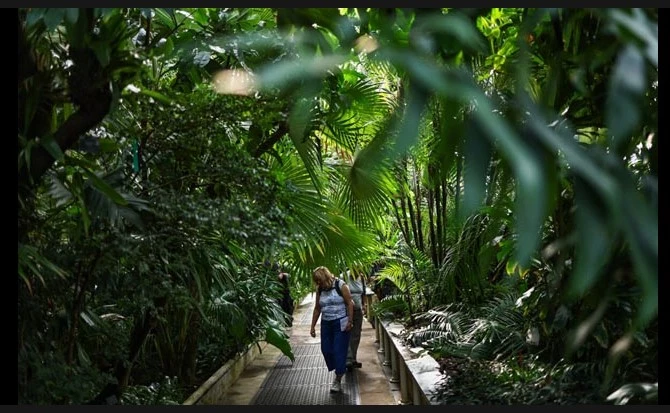UK researchers call for urgent action to save unidentified plants

Stay tuned with 24 News HD Android App

Millions of undescribed plants and fungi species may already be under threat from extinction, researchers at London's Kew Gardens said on Tuesday, calling for urgent action to protect them.
At the sprawling Royal Botanic Gardens in the southwest of the British capital, teams are working hard to identify newly discovered species to help speed up their conservation.
One of them is Rafael Govaerts, who studies the lush palms and tropical plants that have been preserved at Kew's wrought-iron Palm House since it opened in 1848.
Some of them have already disappeared in the wild.
The Belgian botanist has been working with his counterparts from around the world on a recently completed list of all of the world's known vascular plants -- those with stems and roots.
An estimated 350,000 plant species are already known to science but as many as 100,000 more are yet to be formally named.
Three in four of these undescribed plants are already likely to be threatened with extinction, according to the latest edition of Kew's "State of the World's Plants and Fungi", which has been written with the help of some 200 scientists around the world.
To reach that conclusion, researchers cross-checked data from the vast list of vascular plants with the red list from the International Union for the Conservation of Nature (IUCN).
"The advice from the scientists is to consider all newly described species as threatened," Govaerts told AFP.
The report states that as-yet unidentified trees, herbaceous plants and cacti are probably hiding in the remote but biodiverse forests of Brazil, China or New Guinea.
They will now be targeted as part of the fight against climate change and biodiversity loss.
Forty-five percent of flowering plants already discovered -- including those thriving in the humid atmosphere of the Kew greenhouses, such as the South Indian black pepper tree -- are also at risk from extinction.
- 'Zombie' -
In a laboratory under the sprawling botanic gardens, Lee Davies carefully handles the remains of an Ecuadorian tarantula infected with a parasitic fungus called cordyceps, which attacks insects and transforms them into "zombies", causing them to die.
Davies, with a grey beard and toadstool tattoos on his arms, is the manager of the world's largest fungarium. He knows the thousands of intricately labelled green specimen boxes containing 1.25 million dried samples like the back of his hand.
"We have collections that spanned the whole world, covering 150 years of fungal research, and it's still being used for DNA sequencing and helping to establish our understanding of fungal diversity out there in the world," Davies said.
According to the Kew report, scientists have identified only 10 percent of 2.5 million types of fungi on the planet.
Laura Martinez-Suz, research leader in mycology at Kew, says that given the crisis in biodiversity loss, it is vital to name and describe them so they can be preserved.
"We can share information with other researchers, we can try to decipher the roles that they have in ecosystems... and we can try to assess if they are threatened or not," she added.
One long fungi species with a serrated "skirt" has been kept in the celebrated fungarium since 1886. Fungi such as this can be sources of protein, vitamins and minerals.
Davies called the collection he manages "a huge untapped resource for potential new drugs or compounds that we could use" to treat conditions such as multiple sclerosis or certain cancers.
But fungi, which have a symbiotic relationship with plants, are threatened by air pollution or invasive species, and only one percent are on the red list.
As a result, researchers want urgent conservation efforts to treat them the same as plants or animals.
